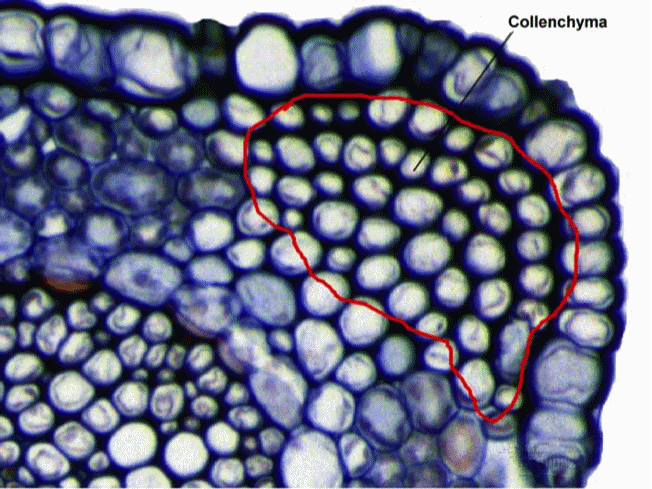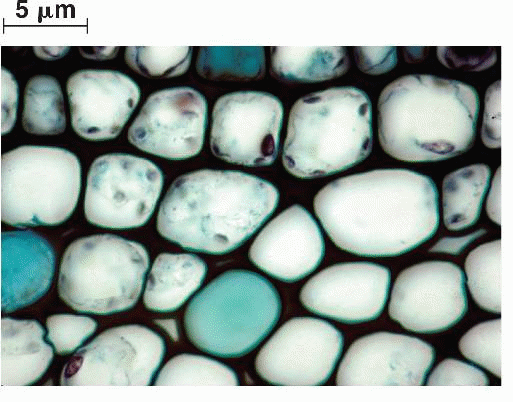 Collenchyma tissue is composed of elongated cells with unevenly thickened walls. They provide structural support, particularly in growing shoots and leaves.
Collenchyma tissue is composed of elongated cells with unevenly thickened walls. They provide structural support, particularly in growing shoots and leaves.
The word 'collenchyma' is derived from the Greek word, meaning "glue", which refers to the thick, glistening appearance of the walls in fresh tissues.
Collenchyma tissue is composed of elongated cells with unevenly thickened walls. They provide structural support, particularly in growing shoots and leaves. The wall is made up of cellulose and pectin.
There are three principal types of collenchyma:
- Angular collenchyma (thickened at intercellular contact points).
- Tangential collenchyma (cells arranged into ordered rows and thickened at the tangential face of the cell wall).
- Lacunar collenchyma (have intercellular space and thickening proximal to the intercellular space) .
 Collenchyma cells (in Helianthus stem)(LM)
Collenchyma cells (in Helianthus stem)(LM)
Collenchyma cells have thicker primary walls and elongated than parenchyma cells. The cell walls are unevenly thickened. Grouped in strands or cylinders, collenchyma cells are found in the leaf stalks and below the epidermis of stems. The tissue helps to support the parts of a plant.
Collenchyma cells lack secondary walls, and the hardening agent lignin is absent in their primary walls. Therefore, they provide flexible support without restraining growth. These cells are living, like parenchyma cells, and may also stay alive for a long period of time. As a plant grows these cells and the tissues they form, provide flexible support for organs such as leaves and flower parts. E.g. Celery.